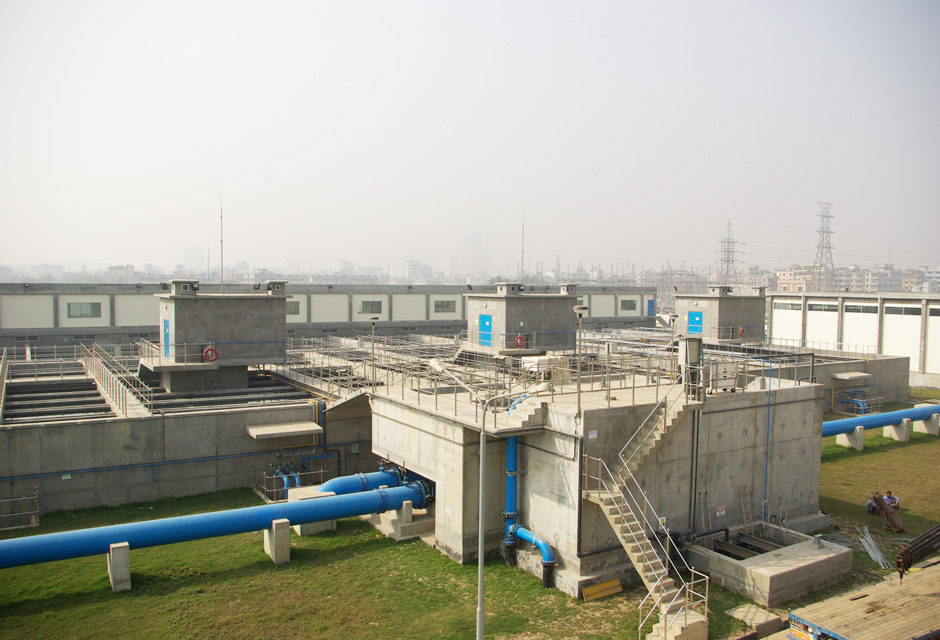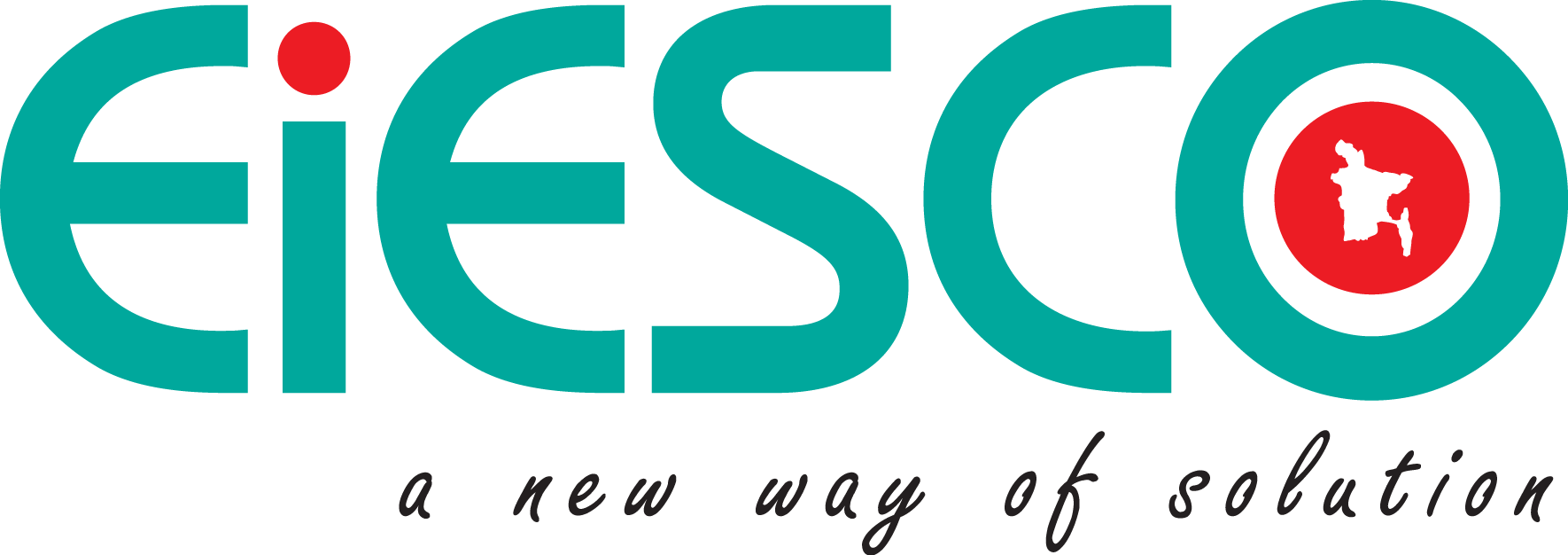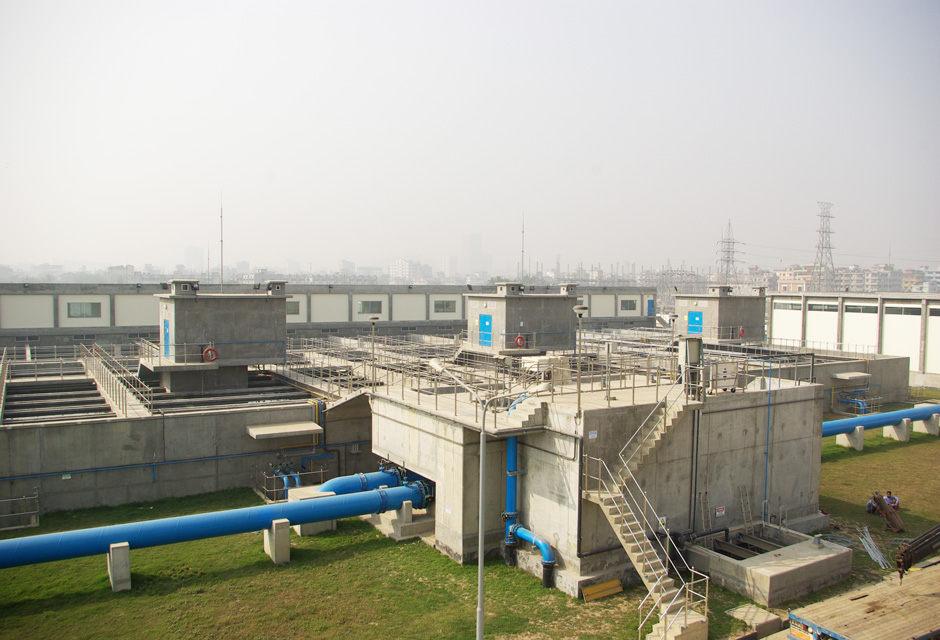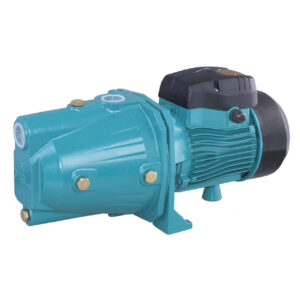A water treatment plant in Bangladesh ensures the supplying of safe, clean drinking water by effectively removing contaminants and improving overall water quality for communities and industries
Bangladesh is home to a bustling population where access to clean water often presents a critical challenge. Over 20 million people face the daunting task of sourcing potable water daily, highlighting the urgency for robust water treatment solutions. Amidst this pressing need, water treatment plant in Bangladesh have become a beacon of hope, turning murky water sources into safe, drinkable water.
These facilities sprung into prominence as early as the 1980s, driven by public health crises and the critical arsenic contamination issue. While the country’s first modern treatment plant was a significant milestone, today’s advancements are even more striking. Notably, the Saidabad Water Treatment Plant, capable of treating 225 million liters per day, serves as a testament to the nation’s ongoing efforts to ensure clean water for its population.

Source: suezwaterhandbook.com
Potable Water Crisis in Bangladesh
Population Growth and Water Demand
Bangladesh’s population is rapidly growing, putting immense pressure on the available water resources. The demand for clean water is increasing daily, especially in urban areas. This growing need has made the potable water crisis more severe.
Many cities and towns struggle to meet the water demands of their residents. As new households form, the pressure on existing water treatment facilities intensifies. It’s becoming increasingly difficult to distribute enough clean water.
Rural areas face additional challenges because of the lack of infrastructure. Residents often rely on unsafe water sources, leading to health issues. This disparity further complicates the overall crisis.
Arsenic Contamination
One of the most pressing issues in Bangladesh is arsenic contamination in groundwater. This is a significant problem affecting millions of people. Arsenic is a toxic element and can cause severe health problems if consumed over time.
The contamination mostly harms rural areas where groundwater is the primary water source. People in these areas are at a higher risk of developing diseases like cancer due to prolonged exposure. Mitigating this contamination requires focused efforts and innovative solutions.
Several organizations are working on solutions, but progress is slow. Importantly, education about the dangers of arsenic is crucial for safeguarding public health. Enhanced awareness can lead to better practices and interventions.
Mitigating Public Health Crises
Waterborne diseases are rampant due to the lack of clean water. Diseases like cholera, diarrhea, and dysentery spread quickly in communities with contaminated water. Addressing this health crisis is crucial for improving quality of life.
Effective water treatment plants can help eliminate these diseases. Turning dirty water into safe drinking water can drastically reduce health risks. This makes water treatment plants a critical part of Bangladesh’s public health strategy.
Community hygiene education is also vital to complement water treatment efforts. Teaching people how to store and use water safely helps prevent contaminations. Together, these measures can significantly boost public health standards.
Population Growth and Water Demand
The rapid population growth in Bangladesh is intensifying the demand for clean water. As cities expand and more people move into urban areas, the pressure on water resources grows. This situation creates a significant challenge for water management schemes.
Rural areas are also feeling the strain. Villages often lack the necessary infrastructure to provide sufficient clean water for their residents. As a result, many rural communities rely on unsafe water sources, exacerbating health issues.
According to this post, the infrastructure challenges extend beyond just water, affecting various sectors of life in rural Bangladesh. Addressing these challenges requires a multi-faceted approach. Coordinated efforts are essential to improve both urban and rural water systems.
Urban Water Management
In cities, the existing water treatment facilities are under severe stress. Rapid urbanization means that more and more people are reliant on these facilities. However, many of these plants are outdated and can’t keep up with the growing demand.
Upgrading these plants is crucial. This will ensure that they can provide enough clean water for everyone. New technologies and investments are necessary to make substantial improvements.
Enhanced water distribution systems are also critical. Even if the water is treated, it must reach all residents in a clean state. Addressing both treatment and distribution can lead to better urban water management.
Impact on Public Health
The lack of clean water has a direct effect on public health. When people drink contaminated water, they are at risk for diseases like diarrhea and cholera. These health issues can become widespread quickly.
Improving the water quality can dramatically reduce illness rates. This not only improves individual health but also reduces the strain on healthcare systems. Investing in clean water solutions is essentially investing in public health.
Education about safe water practices is also necessary. Awareness campaigns can teach communities how to store and use water safely. Together, better infrastructure and education can make a huge difference.
Sustainable Solutions
Sustainable solutions are necessary to meet long-term water demands. Renewable energy sources and innovative technologies can make water treatment more efficient. These solutions are especially important as the population continues to grow.
For rural areas, small-scale, localized water treatment options might be more effective. These can be easier to maintain and can provide immediate relief. Tailoring solutions to specific community needs ensures better outcomes.
Collaboration between government, private sector, and NGOs plays a vital role. Joint efforts can pool resources and expertise for better water management. Only through sustainable and collaborative approaches can Bangladesh meet its water challenges.
Arsenic Contamination
Arsenic contamination in groundwater is a severe issue in Bangladesh. This toxic element can have grave effects on human health, causing diseases like cancer. Over 20 million people are estimated to be exposed to arsenic-contaminated water.
This problem is especially prevalent in rural areas. Many villages lack alternative water sources and are forced to use contaminated groundwater. Long-term exposure to arsenic can have devastating health consequences.
The government and various NGOs are working to mitigate this crisis. They are employing solutions like arsenic removal filters. Education and awareness programs are also critical in teaching communities about the dangers of arsenic.
Advanced technologies are being introduced to better detect and remove arsenic. Sustainable solutions are vital for ensuring long-term safety. Collaborative efforts between scientists, engineers, and local communities are essential to tackle this threat effectively.
Role of Water Treatment Plant in Bangladesh
Water treatment plant in Bangladesh play a crucial role by converting unsafe water into clean, drinkable water. These facilities help reduce the incidence of waterborne diseases. Access to clean water improves public health and overall quality of life.
Rural and urban areas both benefit from water treatment plant in Bangladesh. In urban regions, these plants meet the high water demands of a rapidly growing population. For rural communities, they offer a safer alternative to contaminated groundwater.
One of the key functions of these plants is to remove harmful substances. This includes dangerous contaminants like arsenic and bacteria. Advanced filtration systems and chemical treatments make the water safe for consumption.
Water treatment plant in Bangladesh also support economic growth. By supplying clean water, they enable businesses and industries to operate effectively. A good water supply is a backbone for sectors like agriculture, manufacturing, and healthcare.
Water treatment plant in Bangladesh often use innovative technologies to maximize efficiency. Renewable energy sources, like solar power, are being integrated into their operations. This makes water treatment more sustainable and cost-effective.
Government and international aid play a significant role in funding these projects. Public-private partnerships also contribute to the development and maintenance of water treatment facilities. Collaborative efforts are essential for expanding access to clean water across the country.
Converting Murky Water Sources
One of the vital roles of water treatment plants is converting murky water sources. These waters are often filled with dirt, bacteria, and other harmful contaminants. Advanced filtration systems remove these impurities.
River and pond waters are common examples of murky sources in Bangladesh. These natural bodies of water can be heavily polluted. Water treatment plants make them safe to drink through rigorous processes.
Several stages are involved in cleaning murky water. The first is sedimentation, which allows heavy particles to settle at the bottom. After this, the water goes through filtration to remove finer particles.
Disinfection is another critical step. Chlorine or ultraviolet light kills bacteria and other pathogens. This ensures that the water is safe for human consumption.
Ongoing maintenance is essential for these systems to function effectively. Regular checks and updates prevent contaminants from slipping through. Consistent monitoring ensures high-quality water output at all times.
Communities gain immense benefits from these processes. Clean water leads to better health, boosting educational and economic outcomes. Thus, water treatment plants play an indispensable role in society.
Mitigating Public Health Crises
Water treatment plant in Bangladesh are essential in mitigating public health crises. By providing clean water, these facilities help prevent the spread of waterborne diseases. Diseases like cholera and dysentery can be significantly reduced.
In areas where clean water is scarce, health problems are more common. Contaminated water leads to outbreaks of dangerous illnesses. Effective water treatment can save countless lives.
Education plays a vital role in this effort. Teaching communities about the importance of clean water helps them adopt safer practices. This includes proper water storage and usage at home.
Partnerships between government and private organizations enhance these efforts. Joint projects and funding can build more water treatment plant in Bangladesh. Collaboration is key to expanding access to clean water across the nation.
Emergency response is another critical aspect. During natural disasters, water treatment plant in Bangladesh can be crucial in providing safe water quickly. This immediate access helps control disease outbreaks.
Long-term health benefits also come from improved water quality. Chronic illnesses related to contaminated water decrease. Overall, better water treatment contributes to a healthier, more resilient population.
Water Treatment Plants: An Emergent Solution
Water treatment plant in Bangladesh are appear as a crucial solution to Bangladesh’s water crisis. These facilities transform dirty water into clean, safe drinking water. This transformation is vital for public health and well-being.
The technology used in these plants has advanced significantly over the years. Modern systems can filter out a wide range of contaminants. This includes bacteria, chemicals, and other harmful substances.
A key benefit of these plants is their ability to serve large populations. Urban areas particularly benefit from these widespread services. Communities gain reliable access to potable water.
Funding is often provided by both government and international organizations. This financial support ensures that the plants are built and maintained properly. Public-private partnerships further enhance these efforts.
Environmental sustainability is also a focus for many new projects. Many plants now use renewable energy sources like solar power. This helps reduce the environmental impact of water treatment.
The role of local communities cannot be overlooked. Engagement with residents helps identify specific needs and challenges. Together, this collaborative approach makes water treatment more effective.
Evolution since the 1980s
Since the 1980s, water treatment plants in Bangladesh have seen significant progress. Initially, the technology was quite basic but provided a starting point to address water issues. Early systems focused primarily on removing visible impurities.
By the 1990s, advancements started to include chemical treatments. These new methods helped tackle contaminants like bacteria and viruses. The improved technology marked a big step forward for public health.
In the 2000s, the addition of advanced filtration systems became common. These filters could remove even the smallest particles, ensuring much cleaner water. Plants began using multiple stages of filtration for better results.
More recently, sustainable methods have been introduced. Renewable energy sources, such as solar power, are now used in many plants. This shift helps to reduce the environmental impact of water treatment.
Continuous innovation is key to keeping up with growing demands. Researchers and engineers work tirelessly on new methods. New technologies promise to make water treatment even more efficient.
Community involvement has also increased over the years. Local input helps tailor solutions to specific needs. This collaborative effort ensures that water treatment plant in Bangladesh are benefit everyone effectively.
Modern Advancements in Water Treatment
Modern advancements in water treatment have revolutionized how we handle water purification. Technologies like reverse osmosis and ultraviolet (UV) treatment are now commonly used. These methods ensure that even the smallest contaminants are removed.
Reverse osmosis uses a semi-permeable membrane to filter waout impurities. It can remove contaminants like lead, arsenic, and bacteria. This technology is especially useful in areas where water quality is very poor.
UV treatment, on the other hand, uses ultraviolet light to kill bacteria and viruses. It’s a chemical-free method that ensures safe drinking water. This technique is particularly beneficial for eliminating pathogens that are resistant to chlorine.
Smart sensors and automation have also been integrated into modern plants. These systems monitor water quality in real-time and adjust treatments as needed. This ensures consistent delivery of safe drinking water.
Wastewater recycling is another significant advancement. Treated wastewater can now be reused for purposes like irrigation and industrial processes. This not only conserves freshwater but also reduces pollution.
Sustainability remains a key focus. Many new facilities use renewable energy sources, such as solar and wind power. These eco-friendly approaches make water treatment both efficient and environmentally responsible.
Largest Water Treatment Plant In Bangladesh
The Saidabad Water Treatment Plant is one of the largest facilities in Bangladesh. It plays a crucial role in providing clean water to Dhaka, the capital city. This plant can treat up to 225 million liters of water per day.
Constructed in phases, the plant began operations in the early 2000s. Each phase has added more capacity and advanced technology. This ensures that it meets the growing demands of Dhaka’s expanding population.
The treatment process at Saidabad involves several steps. Initially, water goes through sedimentation to remove large particles. Subsequent stages, including filtration and disinfection, ensure the water is safe for consumption.
One of the unique features of the Saidabad Plant is its use of both river and groundwater sources. This dual approach helps maintain a steady supply of raw water. It is especially useful during dry seasons when water scarcity can be an issue.
Sustainability is a key focus at Saidabad. The plant employs energy-efficient technologies and has plans to integrate solar power. These efforts help reduce its environmental footprint.
This plant’s success provides a model for other regions in the country. It demonstrates the importance of investing in modern and efficient water treatment facilities. With proper maintenance and upgrades, Saidabad will continue to be a vital resource for Dhaka.
Scale of Operation
The Saidabad Water Treatment Plant in Bangladesh operates on a massive scale. It can process up to 225 million liters of water each day. This capacity is essential for meeting Dhaka’s water needs.
The plant serves millions of residents in the capital city. This includes households, schools, hospitals, and industries. A reliable, large-scale operation is crucial for daily life in a bustling city.
Advanced technology allows the plant to handle such a vast amount of water. Automation and smart sensors help manage the flow and quality of water. These innovations ensure smooth and efficient operations.
Energy efficiency is also a key focus. The plant uses energy-efficient pumps and aims to integrate renewable energy sources. This makes the plant both powerful and environmentally friendly.
The scale of operation also requires significant manpower. Hundreds of workers and engineers are involved in its daily functions. Proper training and safety measures ensure smooth operations and high-quality water output.
The plant’s large capacity also allows for future expansion. As Dhaka continues to grow, Saidabad can upgrade and increase its output. This flexibility ensures that the plant can meet long-term water demands.
Ensuring Clean Water Access
Ensuring clean water access is a top priority for Bangladesh. Water treatment plant in Bangladesh play a vital role in this mission. These facilities transform contaminated water into safe drinking water.
Distribution systems are crucial for getting clean water to everyone. Pipes and storage tanks must be well-maintained. This helps to avoid any contamination during transit.
Public awareness is equally important. Teaching people about safe water practices can prevent diseases. Community programs often focus on hygiene and proper storage techniques.
Technology makes a significant impact on water quality. Smart sensors and automated systems ensure consistent monitoring. These tools help maintain high standards of cleanliness.
Government and private sector collaboration is essential. Together, they fund and manage efficient water treatment systems. Joint efforts ensure that clean water reaches even the most remote areas.
Sustainability also plays a key role. Using renewable energy sources like solar power can make water treatment more eco-friendly. This is crucial for long-term access to clean water.
The Future of Water Treatment in Bangladesh
The future of water treatment in Bangladesh looks promising. Advancements in technology will play a significant role. New methods can make water treatment more effective and efficient.
Sustainability will be a key focus area. Using renewable energy sources like solar and wind can reduce the environmental impact. This approach ensures long-term viability.
Community involvement will continue to be important. Engaging local residents helps identify specific needs. Tailored solutions can be developed for different areas.
Government and private partnerships will likely increase. Collaborative projects can pool resources and expertise. This will help to expand and improve water treatment facilities.
Innovative solutions like smart sensors and real-time monitoring will become more common. These tools ensure consistent water quality. They can quickly identify and address issues.
Education and awareness programs will remain crucial. Teaching people about safe water practices can prevent diseases. Overall, the future holds great potential for improved water treatment in Bangladesh.
Addressing Guidelines and Regulations
Guidelines and regulations are crucial for ensuring water safety in Bangladesh. These rules set the standards for water quality. They help protect public health by ensuring consistent water treatment practices.
Several governmental bodies are involved in setting these regulations. They collaborate with international organizations to adopt global best practices. This ensures that the guidelines remain up-to-date and effective.
Water treatment plants must adhere to strict protocols. These include regular testing and monitoring of water quality. Adhering to these guidelines ensures the water is safe for consumption.
Enforcement of regulations is equally important. Authorities conduct inspections to ensure compliance. Penalties are imposed on facilities that fail to meet standards.
Public involvement is also encouraged. Communities can report violations and provide feedback. This helps authorities maintain high standards of water quality.
Continuous updates to guidelines are made based on new research. This ensures that water treatment methods evolve with scientific advancements. Effective regulations and enforcement are key to ensuring safe water for all.
Sustainable Water Treatment Approaches
Sustainable water treatment is vital for long-term water security in Bangladesh. These approaches focus on minimizing environmental impact. Using renewable energy sources is one key method.
Solar power is becoming increasingly popular water treatment plant in Bangladesh. It helps reduce reliance on fossil fuels. This shift makes water treatment both efficient and eco-friendly.
Another sustainable approach is wastewater recycling. Treated wastewater can be used for irrigation and industrial purposes. This conserves freshwater resources.
Innovative technologies like biosand filters are also gaining traction. These filters use natural processes to purify water. They are cost-effective and require minimal maintenance.
Community involvement is crucial for sustainability. Local input helps create tailored solutions that meet specific needs. Engaging residents ensures long-term success.
Education about sustainable practices is equally important. Teaching communities about water conservation can make a significant impact. Together, these methods promise a sustainable future for water treatment in Bangladesh.
Key Takeaways
- Water treatment plant in Bangladesh are vital for safe drinking water.
- These plants use advanced methods like filtration and UV treatment.
- The facilities help remove harmful contaminants from water sources.
- Public health significantly improves with clean and safe water access.
- Sustainable practices make these plants environmentally friendly.

Source: ytimg.com
Frequently Asked Questions
Water treatment plant in Bangladesh play a significant role in providing safe drinking water. Here are some common questions and answers about this important topic.
1. How do water treatment plants remove contaminants?
Water treatment plant in Bangladesh use several methods to remove harmful substances from water. These include filtration, where particles are trapped in a filter, and chemical treatments, which neutralize contaminants.
Additionally, technologies like UV light and reverse osmosis ensure even the tiniest particles and microbes are eliminated. These processes make the water safe for consumption.
2. What challenges do rural areas face with water treatment?
Rural areas often lack the necessary infrastructure for comprehensive water treatment systems. This makes it hard to deliver clean water consistently to these regions.
The cost of setting up advanced facilities can be prohibitive. Moreover, maintaining these systems requires skilled personnel, which is often scarce in rural settings.
3. Are there sustainable options for water treatment plants?
Sustainable practices are increasingly being integrated into modern water treatment plant in Bangladesh. Using renewable energy sources like solar power reduces the carbon footprint of these operations.
Wastewater recycling is another eco-friendly option that conserves freshwater resources. These approaches help make water treatment both efficient and environmentally responsible.
4. What role does technology play in modern water treatment?
Technology has revolutionized how we treat drinking water today. Smart sensors can monitor water quality in real-time, allowing for immediate adjustments if any issues arise.
This not only ensures consistent delivery of safe drinking water but also optimizes resource usage. Advanced filtration systems and automated controls further enhance the efficiency of modern plants.
5. How important is public education in maintaining clean water standards?
Public education plays a crucial role in ensuring long-term access to clean water. Campaigns that teach proper storage and hygiene practices help prevent contamination at home.
A better-informed public can also assist authorities by reporting issues promptly and following safety guidelines diligently. Together, these efforts help maintain high standards of cleanliness and health.
Conclusion
In Bangladesh, water treatment plants are vital in ensuring safe and clean drinking water. They employ advanced technologies and sustainable practices to address various water challenges. Their role is indispensable for public health and economic growth.
Continued investment and innovation in this sector will be crucial for future success. Collaborative efforts between the government, private sector, and local communities will help expand access to clean water. Together, these initiatives will pave the way for a healthier and more sustainable future.





